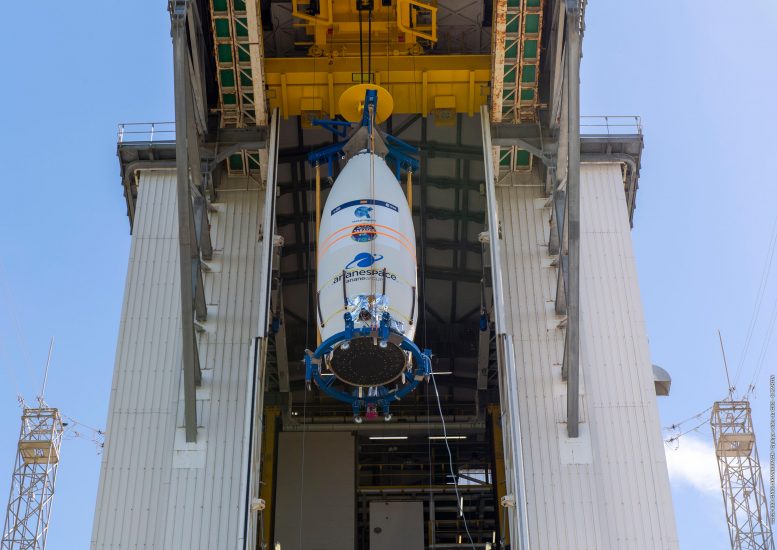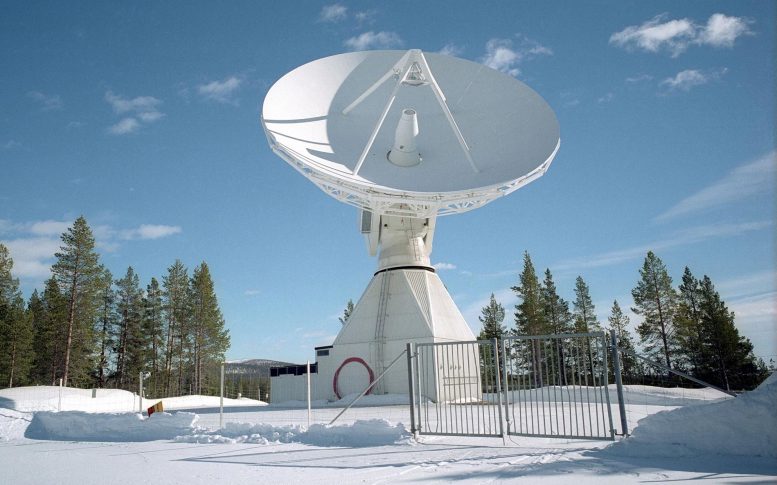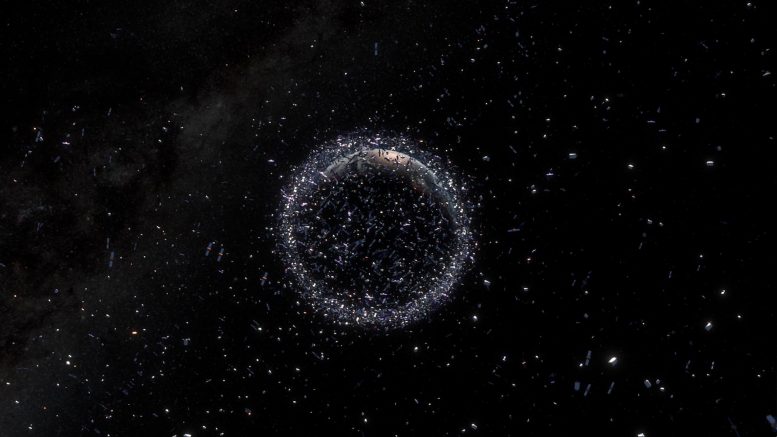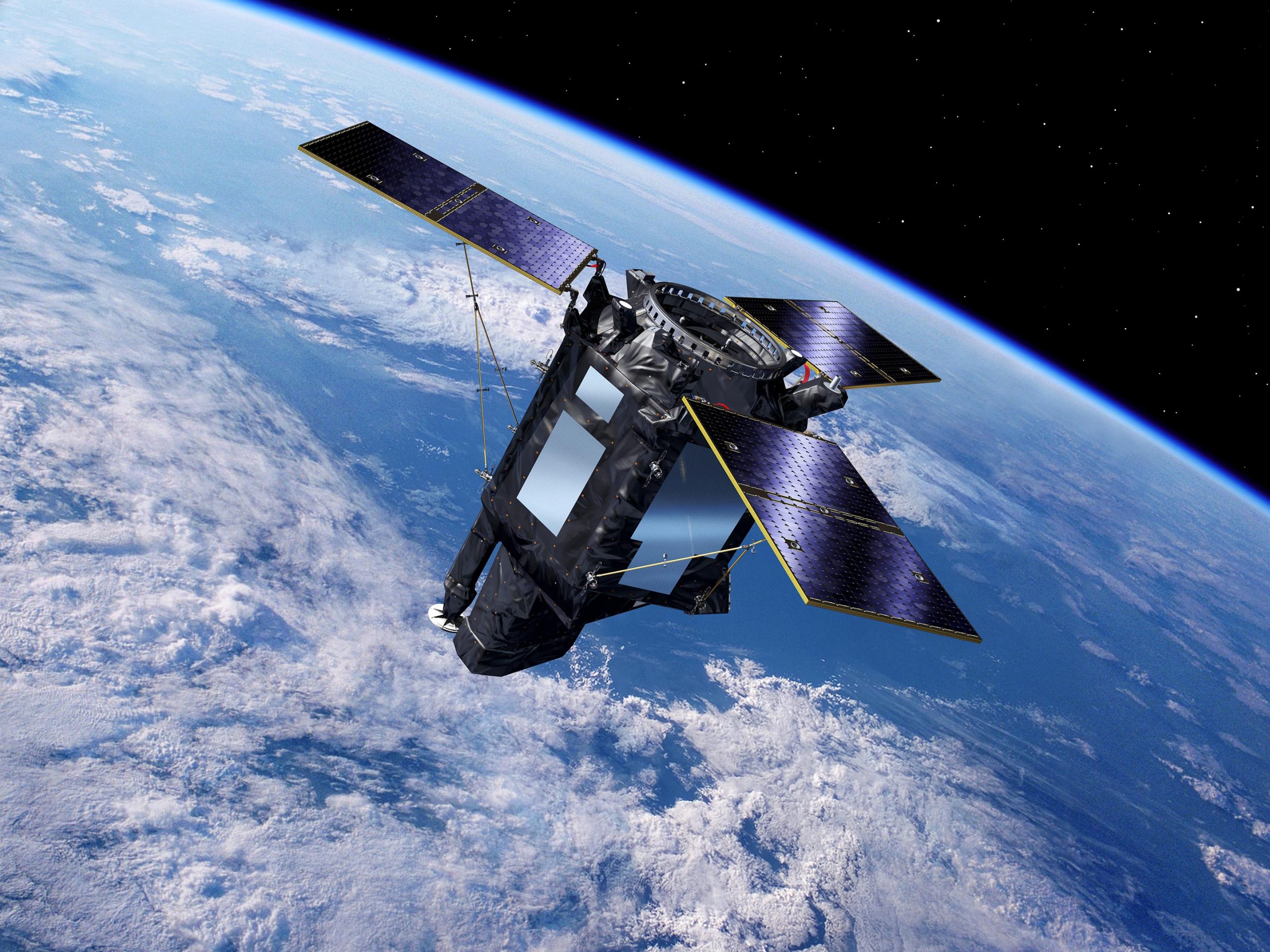The new Spanish mission for high resolution land imaging, known as SEOSAT-Ingenio, will provide high resolution images of the earth’s land cover. With its remarkable detail of the earth, the satellite will benefit society through various disciplines such as cartography, land use monitoring, urban development and water management. Photo credit: ESA – P. Carril
Update: Vega flight VV17 SEOSAT-Ingenio / TARANIS mission error
8 minutes after the start of the Vega mission VV17, after the first ignition of the engine of the upper stage of Avum, a deviation in the trajectory was detected, which led to the loss of the mission. Telemetry data analysis is performed to determine the cause of this error.
A press conference will be held on Tuesday, November 17, 2020 at 12:00 PM Kourou time / 4:00 PM Paris time.
The teams at ESA’s Mission Control Center are preparing for a new Earth observation mission to safely begin its life in space. The SEOSAT Ingenio mission will provide high-resolution images of the earth’s surface and provide important data for a better understanding of our environment as well as for land, water and risk management and safety.
The flagship mission of the Spanish earth observation program will start on Tuesday, November 17 at 02:52 a.m. CET from the European spaceport in Kourou, French Guiana (10:52 p.m. on November 16, local time in Kourou).
Shortly after the launch, the young mission will establish a communication with the ESOC operations center of the ESA in Darmstadt, where the teams will monitor and control the spaceship during its intensive first days in space before transferring control of the mission to the Spanish National Institute of Aerospace Technology (INTA) for routine operations.

SEOSAT Ingenio is hoisted into the Vega launch tower. Photo credit: ESA / CNES / Arianespace / Optique Video du CSG – S. Martin
Spanish genius
SEOSAT-Ingenio is the abbreviation for Spanish Earth Observation Satellite, where ‘ingenio’ is the Spanish word for ingenuity. The satellite will be accompanied on its journey into space on board a Vega rocket by its co-driver, the earth observation satellite Taranis of the French space agency CNES.
SEOSAT-Ingenio will be put into orbit at an altitude of approximately 670 km. From here, high-resolution images of the earth’s land cover are provided, which can be used extensively in the areas of cartography, land use monitoring, urban development and water management.
The Spanish satellite can access and image any point on the earth’s surface within three days. This is especially helpful for mapping unpredictable natural disasters like floods, forest fires, and earthquakes, and for understanding one of the greatest challenges facing humanity: climate change.

The Kiruna S- and X-Band station supports ESA’s Earth observation missions. The station is located in Salmijärvi, 38 km east of Kiruna in northern Sweden. The station is equipped for tracking, telemetry and command operations, as well as receiving, recording, processing and disseminating data. Photo credit: ESA-S.Corvaja
During the early days of SEOSAT-Ingenio in space – the launch and early orbit phase – ESA Mission Control teams will perform a series of maneuvers to reach their target orbit and pass through ground stations, including ESA’s own Kiruna Station that spaceships can communicate with in Sweden.
After the satellite has safely guided the satellite through this phase, it will hand over control via SEOSAT-Ingenio to an INTA control system in Torrejón de Ardoz, Madrid, which will communicate with the satellite mainly via its own ground station in Torrejón.
While SEOSAT-Ingenio is a Spanish national mission, it is the result of an international collaboration. The mission is funded by the Spanish Center for the Development of Industrial Technologies (CDTI) of the Ministry of Science and Innovation, but was developed and managed by ESA.
What could possibly go wrong?
The start and early rotation phase of a mission is the riskiest part of its life. Mission controllers who have been newly ejected into space by their rocket and are not yet fully “awake” must systematically switch on important instruments and test their core functions, while at the same time protecting them from the dangers of space.
To prepare for any eventuality, the ESA mission teams go through a series of simulated launch scenarios that begin long before the launch. In some cases the mission goes perfectly, “a nominal simulation”. In other cases, called “contingency simulations,” problems are compiled and used to help teams develop strategies to deal with any number of problems that may arise during the actual mission.
Watch mission control come to life in ESA’s new dramatization, The Burn:
SEOSAT-Ingenio will join a fleet of earth surveillance spaceships on one of the busiest highways in space. This carries the potential risk of collision with the churned veil of space debris caused by decades of human space activities.
ESA’s Space Debris Office calculates and monitors the risk of collision between SEOSAT-Ingenio and debris during the launch phase and early orbit. A common scenario for emergency simulations is for Space Debris Office engineers to ask teams to react quickly to a possible collision and keep the spaceship safe by maneuvering it out of the path of oncoming debris.

Space debris. Photo credits: ESA / ID & Sense / ONiRiXEL, CC BY-SA 3.0 IGO
For SEOSAT-Ingenio, the Space Debris Office will continue to provide support in collision avoidance even after the spacecraft has been handed over to INTA.
A few days before the start, the mission controllers will go through a “dress rehearsal” in which they will run through the start sequence for the last time. This time, however, it is connected to the spaceship in Kourou, which sits on its Vega launcher and has live data from the satellite.
Back-to-back starts amid a pandemic
SEOSAT-Ingenio is slated to hit the market within a few days of the latest expansion of the European Union’s Copernicus program, Sentinel-6 Michael Freilich.
The launch phase and early orbit of the Sentinel-6 mission will also be conducted by ESOC. Therefore, the teams responsible for the two missions carried out overlapping simulations and dress rehearsals COVID-19 Pandemic.
“More coordination is required now than ever before,” says Isabel Rojo, Spacecraft Operations Manager at SEOSAT-Ingenio. “It is always a challenge to have two launches so close together, but due to the pandemic, the mission teams for SEOSAT-Ingenio and Sentinel-6 and their use of the facilities at ESOC must be strictly separated.”
“The ESA Mission Control teams and infrastructure are well prepared for these challenges. We look forward to guiding SEOSAT-Ingenio safely through its critical beginnings in space and preparing it for its important Earth observation mission. ”
Update: Vega flight VV17 SEOSAT-Ingenio / TARANIS mission error
8 minutes after the start of the Vega mission VV17, after the first ignition of the engine of the upper stage of Avum, a deviation in the trajectory was detected, which led to the loss of the mission. Telemetry data analysis is performed to determine the cause of this error.
A press conference will be held on Tuesday, November 17, 2020 at 12:00 PM Kourou time / 4:00 PM Paris time.



